Tiny seeds can pack a serious nutritional punch — full of fiber, healthy fats, minerals and plant compounds that support your health in multiple ways. Below we explore six seeds that stand out for their nutrient density and versatility, along with what makes each one special and how to incorporate them into your diet.
1. Flax Seeds
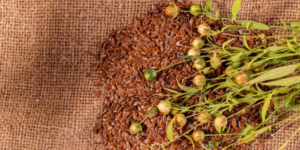
Flax Seeds (also called linseeds or alsi seeds) are among the most commonly recommended seeds, and for good reason. They are a rich source of dietary fiber and plant-based omega-3 fats, especially alpha-linolenic acid (ALA).
However, one key point: since much of their beneficial fat and nutrients are locked beneath the hard outer shell, it’s best to consume them ground (rather than whole) so your body can absorb them properly.
What you’re getting: In a 100-gram serving, flaxseeds provide around 27 g of fiber, 18 g of protein, 6.5 g of omega-3 fats and a variety of vitamins and minerals (such as thiamine, magnesium, manganese).
Why they’re beneficial:
- The combination of fiber, ALA and lignans (plant compounds with antioxidant properties) have been shown to help reduce cholesterol and other heart-disease risk markers.
- The fiber helps support digestive health and promotes steady blood sugar.
- Because they’re a plant-based source of omega-3s, they’re particularly attractive for those avoiding fish.
How to use them:
- Add a tablespoon of ground flaxseed to your morning oatmeal or smoothie.
- Use flaxseed meal in baking (e.g., muffins, bread) or stir into yoghurt.
- Keep ground flaxseed in an airtight container in the fridge or freezer to preserve freshness.
2. Chia Seeds
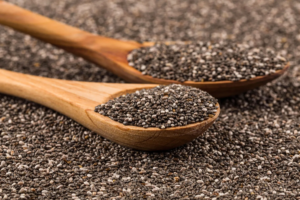
Chia seeds are tiny but mighty. They share many of the beneficial traits of flaxseeds — high in fiber, rich in omega-3 fats and loaded with antioxidants.
Nutrient profile: A 100-gram serving of chia seeds delivers roughly 17 g of protein, 326 mg of magnesium, 7.3 mg of manganese, and a considerable amount of fiber.
What makes them special:
- Their high fiber content helps you feel full, supports digestion and slows down blood-glucose spikes.
- The combination of fiber + omega-3s + antioxidant compounds means chia seeds can contribute to cardiovascular and metabolic health.
- When soaked in liquid, chia seeds form a gel. That gel property means you can use them to add texture and nutrients to puddings, smoothies and even savoury dishes.
Usage ideas:
- Make chia pudding overnight: combine chia seeds with milk (or plant-milk), vanilla and fruit; the seeds swell and create a creamy dessert/snack.
- Stir into smoothies or simply top your yoghurt with a spoonful.
- Use them to thicken sauces or dressings naturally, with the bonus of added nutrients.
3. Hemp Seeds
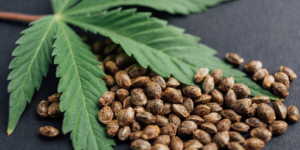
Hemp seeds (from the plant species Cannabis sativa but non-psychoactive) are a nutritional powerhouse, especially when it comes to protein. They offer all the essential amino acids, making them one of the more complete plant-based protein sources.
Key nutrients & benefits:
- Hemp seeds contain both omega-3 and omega-6 fatty acids in a favourable balance, as well as vitamins E, D and A.
- In addition, they deliver polyphenols and terpenoids — these are plant compounds with antioxidant, anti-inflammatory and even antimicrobial potential.
- Because of the protein and healthy-fat combination, hemp seeds are often used in functional foods and healthier snack formulations.
Why choose them:
- They’re ideal for vegetarians, vegans or anyone looking to boost their plant protein intake.
- The fats and other bio-compounds support not only muscle and tissue health but also may reduce inflammation and promote immune health.
How to include them:
- Sprinkle a tablespoon or two of hemp seeds on salad, cereal or yoghurt.
- Blend into smoothies for a bit of nutty flavor and added creaminess.
- Use hemp seed oil (if available) as a finishing oil over cooked vegetables or grains (note: don’t cook at high heat).
4. Sesame Seeds
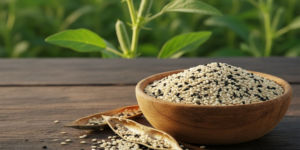
Sesame seeds are ancient — one of the earliest oil crops, and still widely used today in many cuisines around the world.
Nutritional & health highlights:
- Despite their small size, they are packed with healthy fats, proteins, amino acids, vitamins and plant compounds.
- Among their special compounds are sesamin and sesamol. Research indicates these may help reduce inflammation and oxidative stress, and potentially protect the heart, liver and kidneys.
- Additional benefits: they may support skin and hearing health, help lower cholesterol and even have early-stage cancer-cell-fighting activity (though more human studies are needed).
Why they matter:
- If you find seeds a little bland, sesame brings a distinct nutty flavour and can easily be integrated into both sweet and savoury recipes.
- They’re a great choice for adding flavor and nutrition with minimal fuss.
Usage suggestions:
- Toast sesame seeds lightly and sprinkle over stir-fried vegetables, rice dishes or salads.
- Use tahini (sesame seed paste) in dressings, dips or sauces for added richness.
- Mix sesame seeds into bread dough, granola or homemade snack bars.
5. Pumpkin Seeds
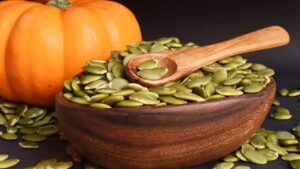
Pumpkin seeds (often referred to as pepitas when hulled) are full of nutritional value: fiber, healthy fats, amino acids and antioxidant compounds like tocopherols (a form of vitamin E) and carotenoids.
Benefits at a glance:
- Studies indicate that pumpkin seeds (and their oil) may help regulate blood sugar, protect liver health, support heart health, reduce inflammation and infection risk, improve mood and support male fertility after chemotherapy.
- They also seem to benefit digestion and may help protect against ulcers.
Why include them:
- They’re a versatile seed with a pleasant flavour and texture: slightly crunchy, slightly nutty.
- Because they contain both healthy fat and fiber, they help you stay satisfied longer and stabilize energy.
- The mood and fertility support make them stand out among seeds.
How to use them:
- Roast raw pumpkin seeds with a little olive oil and sea salt for a simple snack.
- Add to trail mix, granola or homemade energy bars.
- Sprinkle over soups, salads or roasted vegetables for extra crunch and nutrition.
6. Sunflower Seeds
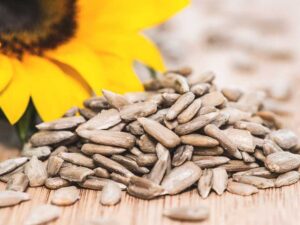
Sunflower seeds are more than just a snack-time favorite. They are densely packed with nutrients including protein, unsaturated fats, fiber, vitamins (especially vitamin E), selenium, copper, zinc and folate.
Health highlights:
- A 100-gram portion supplies about 18.9 g of protein, 302 mg of magnesium, 4.37 mg of iron and 2.65 mg of manganese.
- The fats include linoleic acid (an omega-6 fat) and oleic acid (a monounsaturated fat) — both of which may help lower “bad” LDL cholesterol, reduce triglycerides and raise “good” HDL cholesterol, thus supporting cardiovascular health.
- Some research even links sunflower seed components to potential protective effects against breast-cancer gene expression (in certain populations).
Why they matter:
- They are easy to find, affordable, and extremely versatile.
- Their crunchy texture and mild nutty flavor make them easy to incorporate into many meals and snacks.
- Their nutrient profile—especially vitamin E and healthy fats—makes them especially useful for skin health and general antioxidant protection.
Usage ideas:
- Use roasted or raw sunflower seeds as a topping for oatmeal, yoghurt or salads.
- Blend into homemade seed butter or incorporate into granola and bars.
- Keep a small container of roasted sunflower seeds at your desk for a healthy snack alternative to processed foods.
Why Seeds in General Are Worthy of Your Plate
The six seeds above illustrate a larger truth: seeds in general are nutrient dense, compact powerhouses of health-supportive compounds. As the source article puts it:
- Seeds are “great sources of fiber, vegetarian protein, healthy monounsaturated fats, polyunsaturated fats and many important vitamins, minerals and antioxidants.”
- Regular consumption of seeds as part of a balanced diet may help reduce blood sugar, cholesterol and blood pressure.
- Because seeds contain the starting materials needed to develop into complex plants, they’re inherently rich in nutrients and bioactive compounds.
In practical terms, adding even a small handful of seeds to your day (in cereal, smoothie, yoghurt, salad or snack) can make a measurable difference in your nutrient intake and overall health outcomes.
Practical Tips for Incorporating Seeds Into Your Diet
Here are some suggestions to get the most out of these seeds:
- Variety is key: Don’t stick to only one type. Each seed has unique nutrients and benefits; alternating between them gives you broader coverage.
- Mind the preparation: For example, flaxseeds are best consumed ground; sesame seeds benefit from light toasting to unlock flavor and nutrients; pumpkin and sunflower seeds may be more digestible when hulled or roasted.
- Watch portion sizes: Though seeds are healthy, they’re calorie-dense. A typical serving size is around 1 to 2 tablespoons (or a small handful) per day.
- Storage matters: Because many seeds contain healthy fats, they’re susceptible to oxidation (going rancid). Store in airtight containers, ideally in a cool, dark place or in the fridge.
- Integrate into meals and snacks: Sprinkle seeds over breakfast bowls, blend into smoothies, stir into soups or stews, use as topping for roasted vegetables, or mix into homemade snack bars or trail mixes.
- Be mindful of allergies: If you have a seed or nut allergy, introduce new seeds cautiously and listen to your body.
Final Thoughts
Seeds are nature’s little nutrient-troves — compact, versatile and high in beneficial compounds. Whether you opt for flax, chia, hemp, sesame, pumpkin or sunflower seeds (or better yet, a mix of them), you’ll be giving your body fiber, good fats, minerals and antioxidants that support heart health, digestion, mood, metabolism and more.
If you’re looking to make a small dietary shift with potentially substantial benefits, simply adding a tablespoon or two of seeds into your regular meals could be the easy, effective move you were looking for.
Adopt a seed-rich routine, experiment with creative ways to use them, and you’ll likely find both flavour and function added to your plate.


